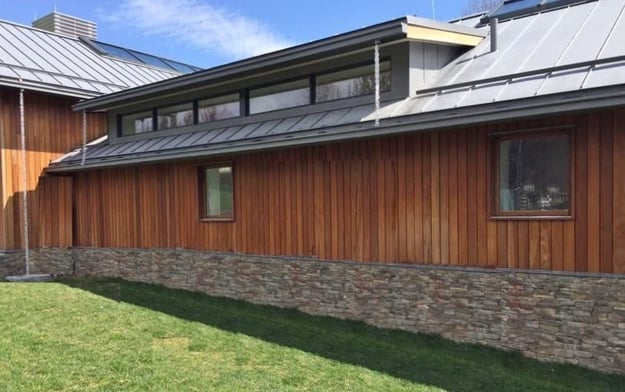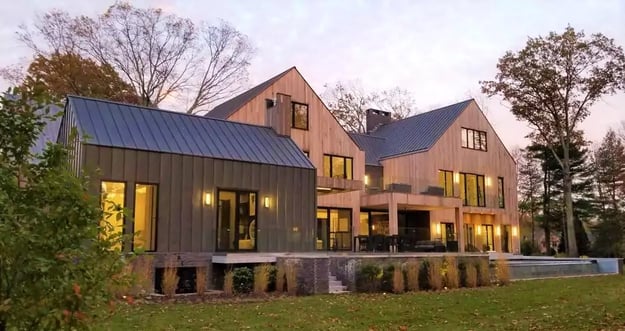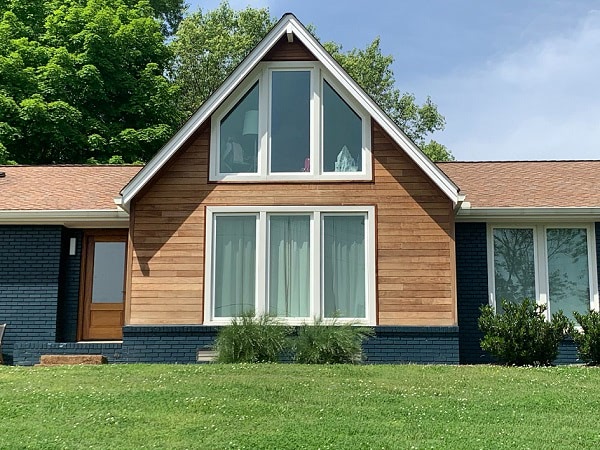
Building or designing a healthy home includes more than your interior choices; exterior choices are important, too. Architects will often start their process looking at the entire home or building as a beautiful, yet highly functional machine. A well designed rainscreen system is an inexpensive, and highly effective, way to design and build a healthier home.
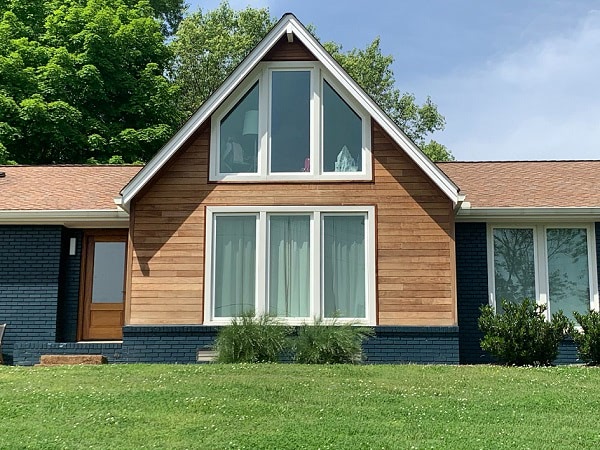 The Climate-Shield Rainscreen system with FSC Certified Machiche hardwood siding material.
The Climate-Shield Rainscreen system with FSC Certified Machiche hardwood siding material.
What’s Better: Traditional Wood Siding Installation or Wood Rainscreen Siding installation?
If you choose wood siding for your new home or remodel, you probably love the natural look of real wood. Traditional siding installation and a wood rainscreen siding installation look very much alike from the outside. From the street, they both look pretty much the same. However, it’s what going on behind the siding that makes all the difference to creating a more sustainable healthier home.
Traditional wood siding design and installation usually consists of either wood shingles or shakes, wood clapboard or wood siding boards in some type of pattern or arrangement. Various shiplap or tongue and wood siding profiles are also common. Board and batten, vertical siding, diagonal siding, and horizontal siding installations all create a unique look.
Traditional wood siding is usually installed in one of three different ways:
- Directly over a water resistive barrier, with no rainscreen gap for ventilation or drying
- Over a ‘rainscreen’ style water resistive barrier that allows for limited ventilation
- Over furring strips to create a rainscreen gap
Well designed wood rainscreen assemblies perform differently than traditional siding
Wood rainscreen siding designs and installation can mimic the look of traditional wood siding. Or you can create a unique look altogether. It’s the rainscreen system, not so much the siding, that creates a healthier home design. Designers and builders often ask themselves questions like:
- “How can I keep the elements out?”
- “How can I get excess interior moisture to leave the home?”
- “How can I create a heathier, sustainable design?”
The answer to all these questions is to create a well designed rainscreen.
Get more information in the free download, the
"Ultimate Guide to Rainscreen Siding"
RELATED: UNDERSTANDING RAINSCREEN SIDING - WHAT IS IT?
Despite the name, a good rainscreen is not just for rain. The system should be designed to address snow, sleet, humidity, and solar heat, and be able to stand up to storms and high winds. Let’s consider your home's climate and see if a rainscreen is a good solution for your project.
- Are you in area that has driving rainstorms? Or in you in a hot and humid climate? A home project in either locale will greatly benefit from a rainscreen system that will not trap moisture and humid air against your exterior. This reduces the threat of rot and mold getting a grip on your walls. Moist exterior wood can give insects an opportunity to do damage, too.
- Or are you in a hot, dry, climate? A rainscreen system can help here, as well. A well-designed rainscreen can reduce the heat in your home by releasing it from behind your siding instead of holding it in, saving you energy costs.
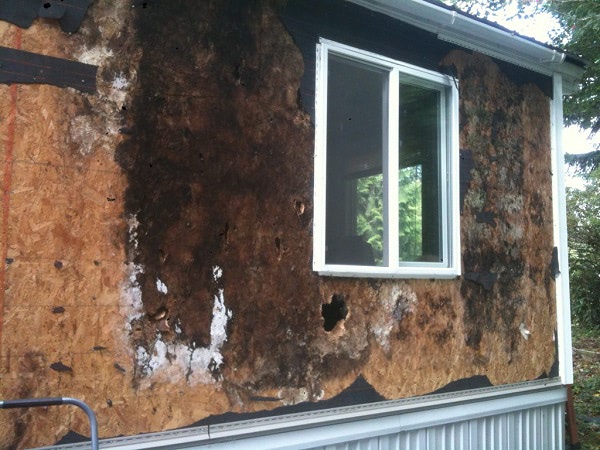 Siding installation without proper ventilation in the wall cavity can invisibly lead to severe damage
Siding installation without proper ventilation in the wall cavity can invisibly lead to severe damage
Traditional Furring Strip Rainscreen Siding Installation
Traditional siding installation often uses a tongue and groove (T&G) profiles on their boards. This type of siding is considered a ‘closed joint system’ and uses wood furring strips to attach to your exterior. A closed joint system only allows trapped air moisture to escape from the top and bottom gap.
T&G rainscreen siding with has some benefits:
- Nearly all the screw fasteners are hidden (except at the top and bottom)
- The rainscreen hardware costs are lower.
- Looks like a traditional siding.
But there are downside to T&G siding installations:
- Additional costs for wood furring strips plus time and labor to install.
- A closed joint rainscreen doesn't allow for air flow between the siding boards.
- A closed joint rainscreen takes much longer to dry out in the rainscreen cavity.
- Since the ventilation is only at the top and bottom it dries only between the furring strips.
- Over time, any trapped moisture can soften the wood of your exterior and the furring strips, creating opportunities for mold and insects to get behind your walls (and into your home).
- Wood furring strips can degrade and rot over time from moisture and temperature changes.
- Closed joint systems can trap solar heat against your exterior and raise the temperature inside the house (and raise your cooling bill).
Ready for more? Grab your FREE copy of the "Ultimate Guide to Rainscreen" here.
RELATED: WOOD RAINSCREEN PHOTO GALLERY
Climate-Shield Rainscreen Siding Installation
The Climate-Shield Rainscreen System provides the built-in ability to help your home, building or structure minimize solar gain during hot weather, by design. The system is considered a best demonstrated practice in sustainable design that is beautiful, effective and highly durable. Because the entire rainscreen system is exceptionally well engineered and fully patented, you can rest assured that the integrity and performance of your project will endure for many years.
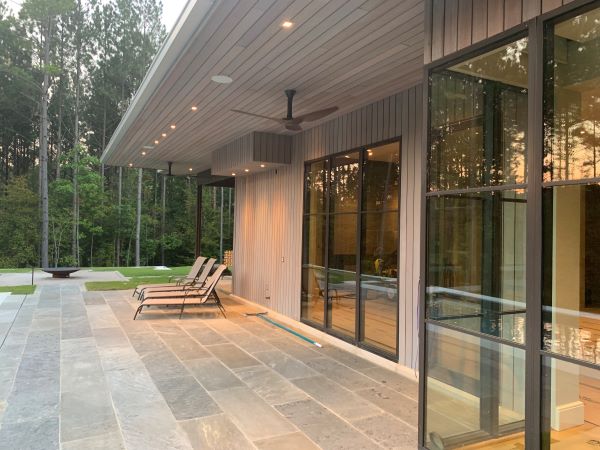 A stunning use of wood rainscreen contrasted with glass and stone on a Tennessee home.
A stunning use of wood rainscreen contrasted with glass and stone on a Tennessee home.
RELATED: CHECK OUT THE FREE DOWNLOAD "WOOD RAINSCREEN DESIGN IDEAS PORTFOLIO"
Climate-Shield Rainscreen System benefits:
- Allows the siding to “breathe” between the boards, allowing moisture to escape quickly throughout your siding.
- Significantly faster, easier installation compared to a furring strips rainscreen installation.
- Design options are greater since it can be installed vertically, horizontally, or diagonally with less labor.
- Has a built-in ability to help your home minimize solar gain during hot weather, keeping energy costs down.
- The rainscreen clips are all marine grade aluminum alloy so they won't rot, rust or corrode.
- Designed for a simpler and more durable attachment.
- Has a very low lifecycle cost including faster installation, low maintenance, and a longer lifetime durability.
- A very high return on investment over its lifetime use, making it the more cost-effective option long-term.
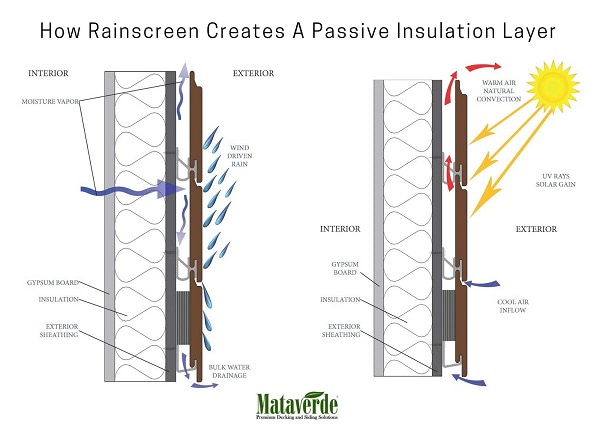 These diagrams show how the Climate-Shield Rainscreen profile creates airflow behind and between the boards to allow moisture or heat to escape up and out.
These diagrams show how the Climate-Shield Rainscreen profile creates airflow behind and between the boards to allow moisture or heat to escape up and out.
Downsides:
- The Climate-Shield system may have higher upfront material cost.
See more about installation and components in the "Ultimate Guide to Wood Rainscreen".
Download your FREE copy now.
RELATED: FEATURED WOOD RAINSCREEN SIDING RESIDENTIAL PROJECT PORTFOLIO
What Are The Wood Rainscreen Siding Material Options
You have several excellent options when it comes to the Climate-Shield rainscreen profile in natural wood siding materials. These materials add to the functionality of the rainscreen and elevate the look of your Climate-Shield exterior. It will be the most impressive on the block.
RELATED: RAINSCREEN WOOD SIDING OPTIONS
Wood Siding Materials for Rainscreen Siding
Premium hardwoods will add to the value and healthy home benefits of your Climate-Shield Rainscreen in ways that a softwood or pressure treated wood can't match.
There are many beautiful and durable wood siding species that are appropriate for a rainscreen wood siding installation to choose from. High density hardwood siding materials such as Ipe wood, Cumaru wood, Garapa wood, and FSC Certified Machiche wood are stunning and low maintenance.
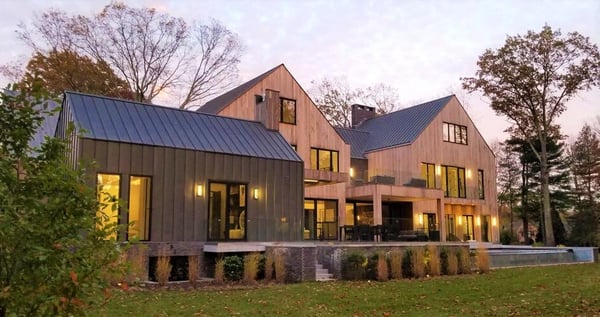 A gorgeous Garapa premium hardwood rainscreen siding graces this home.
A gorgeous Garapa premium hardwood rainscreen siding graces this home.
The benefits to using a natural high-density hardwoods for your home siding are many: they are highly resistant to damage from insects, moisture, and the elements. They require no chemical treatments, painting, or staining.
Premium hardwoods are extremely low maintenance. Maintenance includes cleaning as needed and a periodic coat of UV oil-based protectant like a Penofin rosewood based oil for hardwoods.
If you prefer to let your siding “silver out” naturally to a mellow satiny-gray patina you can skip the UV protectant after installation and still keep the benefits and strength of the hardwood.
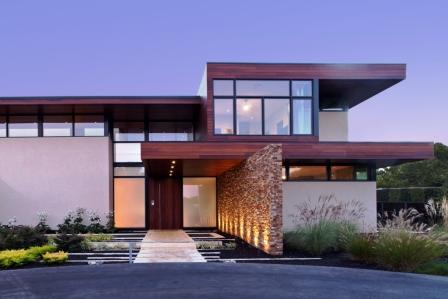
FSC Certified Machiche rainscreen wood siding on a contemporary designed home.
Do you have a project planned that could benefit rom a healthier, sustainable, and well-designed rainscreen system? Are you looking for a time saving, cost efficient installation? If the Climate-Shield Rainscreen System could improve your next project, let us know. Our expert siding team is here to answer questions and get you started.
Get your "Ultimate Guide to Rainscreen" download FREE now.
Interested in a sample of wood rainscreen siding for your healthy home project?
Request one here FREE and we will get it right out to you.
Ready to price your rainscreen project? Request a quote here and our team will take care of you!

Related Posts
